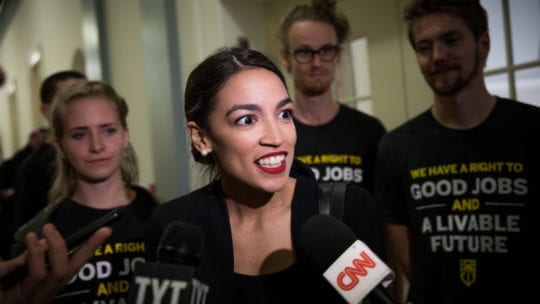
Wherever you stand on the political spectrum, one thing is for certain: You've probably seen Congresswoman Alexandria Ocasio-Cortez pop up on your timeline over the last several months. Ocasio-Cortez, or "AOC," as she's come to be known on Twitter and in news headlines, first entered the spotlight during the 2018 primary election, when her Congressional win unseated an established Democratic incumbent, and Ocasio-Cortez became the youngest member of Congress in history.
In the last few weeks, AOC has seen a high school video go viral (and combated the backlash), been interviewed on "60 Minutes" and collected myriad headlines in top-tier publications. In other words, she's a PR professional's dream, racking up consistent wins in the mainstream media and on social.
So how has AOC come to dominate the digital space? Here are 3 ways the politician is leveraging communications best practices to grow her digital footprint and own the news cycle.
A pitch-perfect crisis response. If a video of one of your top executives performing the library dance scene from "The Breakfast Club" in high school surfaced and went viral, it might be seen as a crisis at your organization. Press releases would need to be deployed, and outreach to press contacts would kick into high gear.
Not so with AOC. A conservative critic posted a 2010 video of AOC dancing à la The Brat Pack with high school classmates the day before she was sworn in, hoping to embarrass the new Congresswoman as she took office. But the move backfired when supporters and celebrities like Patton Oswalt and Ally Sheedy took to Twitter, applauding the video and defending AOC's right to have some good, clean fun as a teen. And while some influencers might allow their audience to handle most of the backlash in a case like this, AOC took it a step further, posting a cheeky video response on Jan. 4:
I hear the GOP thinks women dancing are scandalous.
Wait till they find out Congresswomen dance too! ????????
Have a great weekend everyone :) pic.twitter.com/9y6ALOw4F6
— Alexandria Ocasio-Cortez (@AOC) January 4, 2019
AOC's ability to turn a smear attempt into a statement on women's freedoms is a perfect case study in making the most out of a potential crisis. When communications professionals design a crisis response that speaks to their target audience's values, while acknowledging the original source of the crisis (in this case, the video), people take notice. Hence, AOC's video made it into the news cycle a second week running, bolstered by an on-brand message of liberation.
Partnering with likeminded thought leaders. While AOC is certainly capable as a solo act, she's used her platform to call attention to other women newly elected to Congress. Take this photo of her diverse cohort of newly elected Congresswomen, which has seen hundreds of thousands of Twitter engagements. AOC's peers in Congress, like Representatives Barbara Lee and Ilhan Omar, are also posting their own photos of fellow female leaders, raising awareness of their issues and calling attention to the recent rise in minority representatives. Cross-promotion works especially well when goals are aligned, and AOC has made good use of the technique, amplifying those who would see her advance politically.
Employing media training best practices. Whether or not you agree with AOC's "60 Minutes" talking points, it's undeniable that the politician stayed on message throughout, succinctly tying back to initiatives she champions. AOC keep her answers short and tied back to the tax, education and environmental policies she is working toward at every opportunity.
When asked if Trump was a racist, AOC responded "Yeah. Yeah. No question," a sound byte that has since gone viral. Smart communicators know that often, a simple "yes" or "no" has more staying power than a pre-written talking point. The clip has been shared thousands of times on social, and President Trump's detractors have found a new ally in AOC, although she does not criticize him at the same rate as her far-left peers ("Because I think he's a symptom of a problem," she told Anderson Cooper).
Follow Sophie: @SophieMaerowitz
